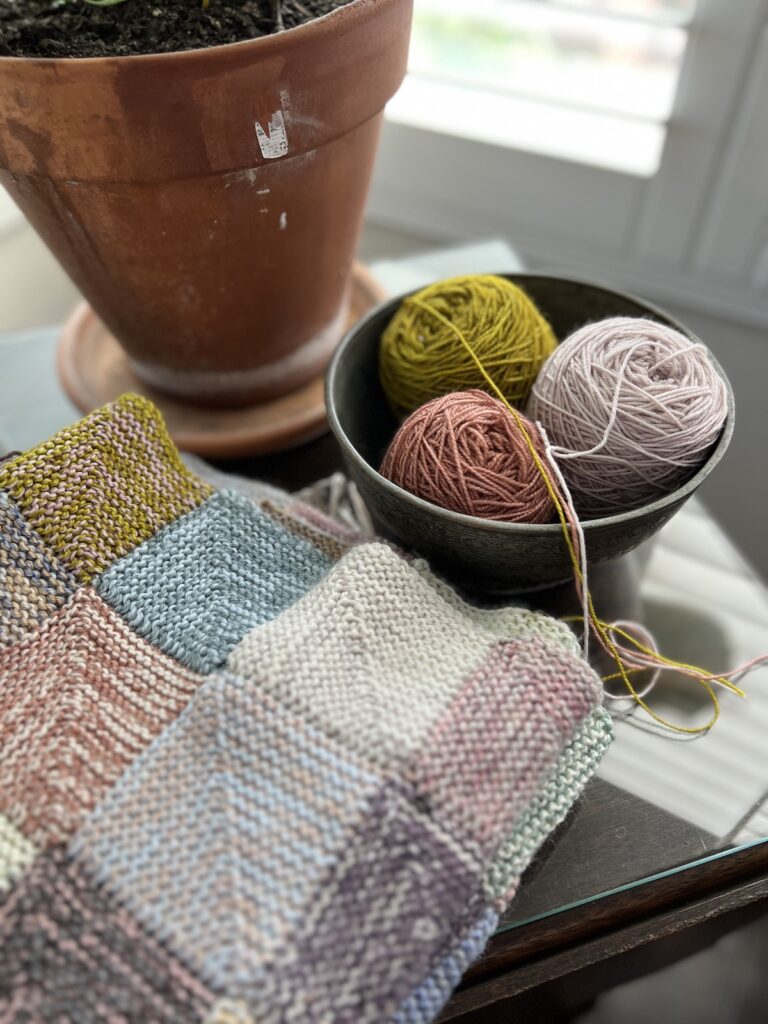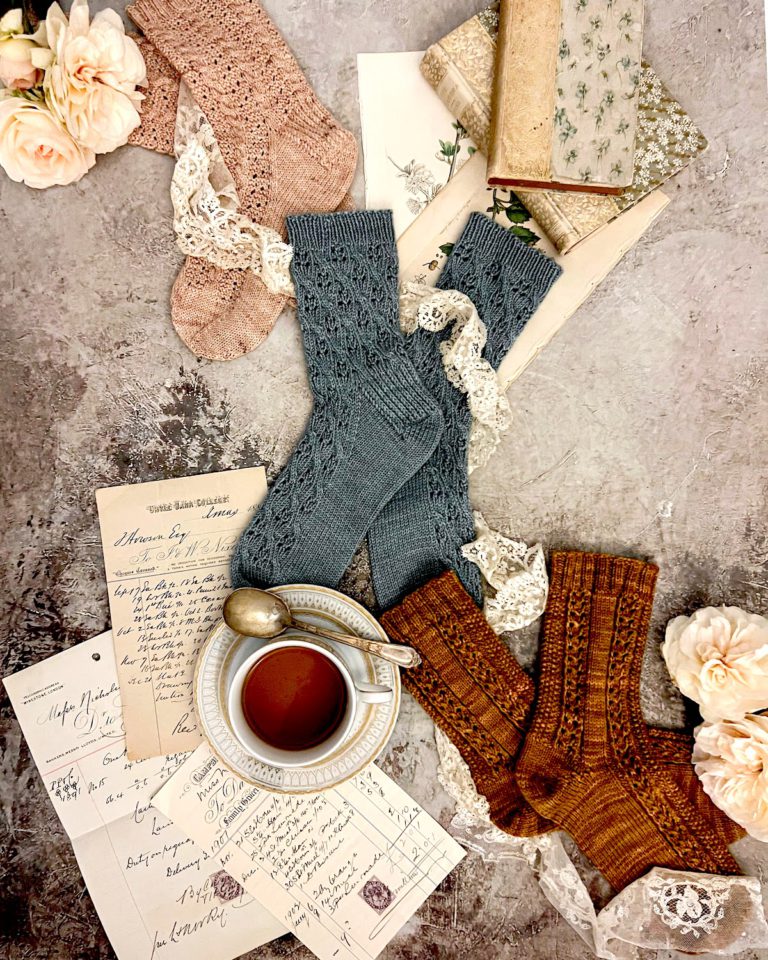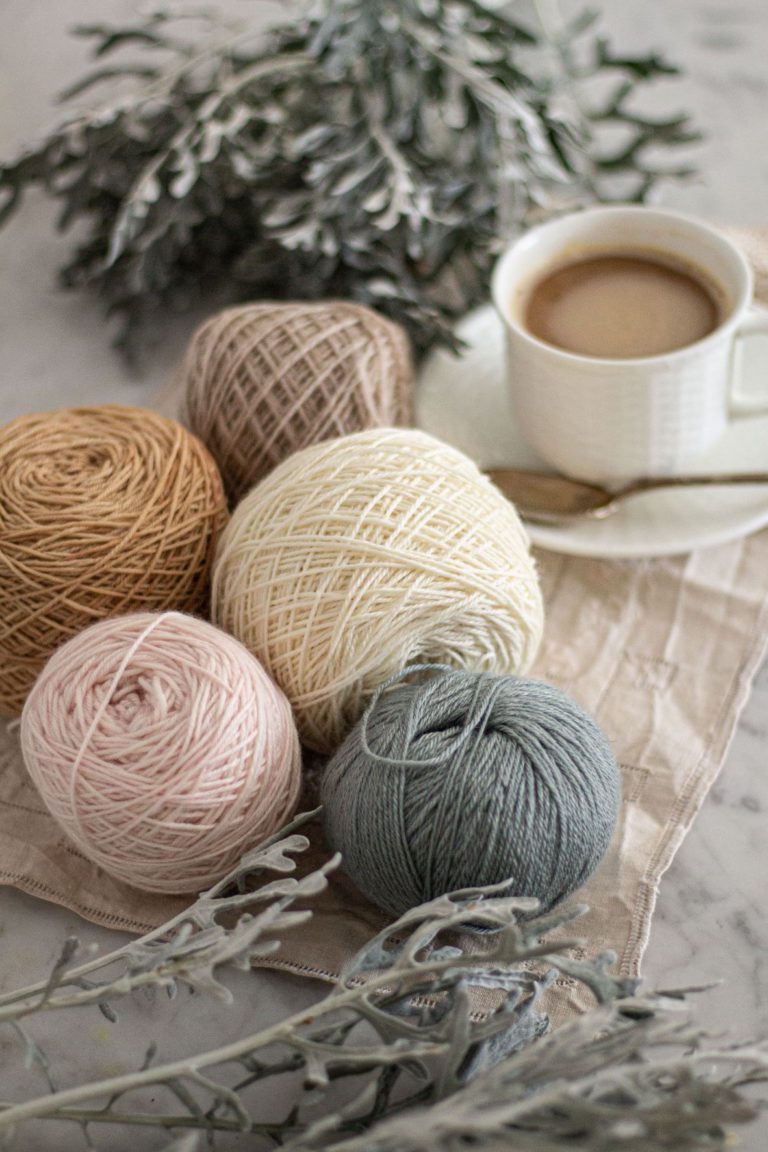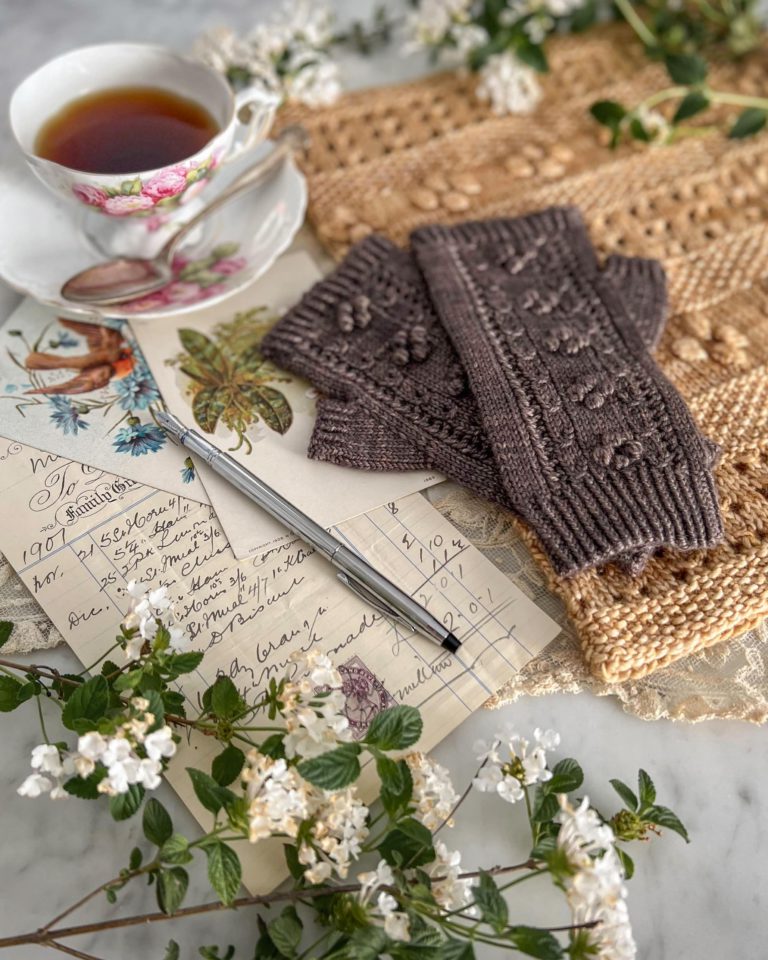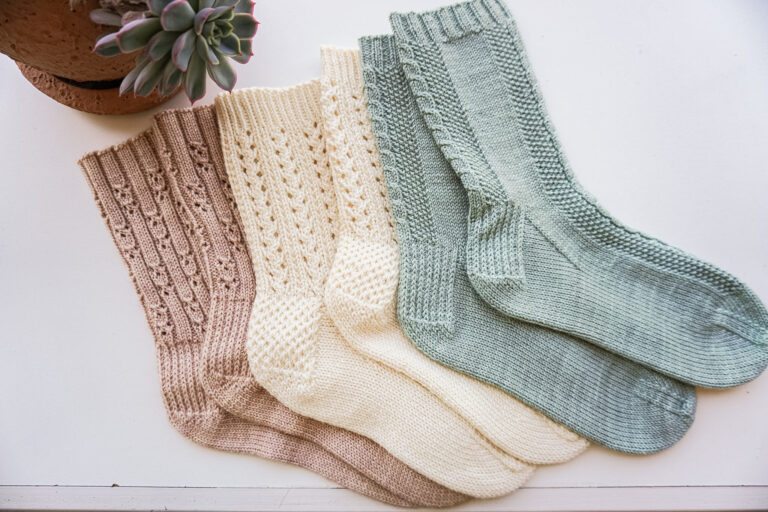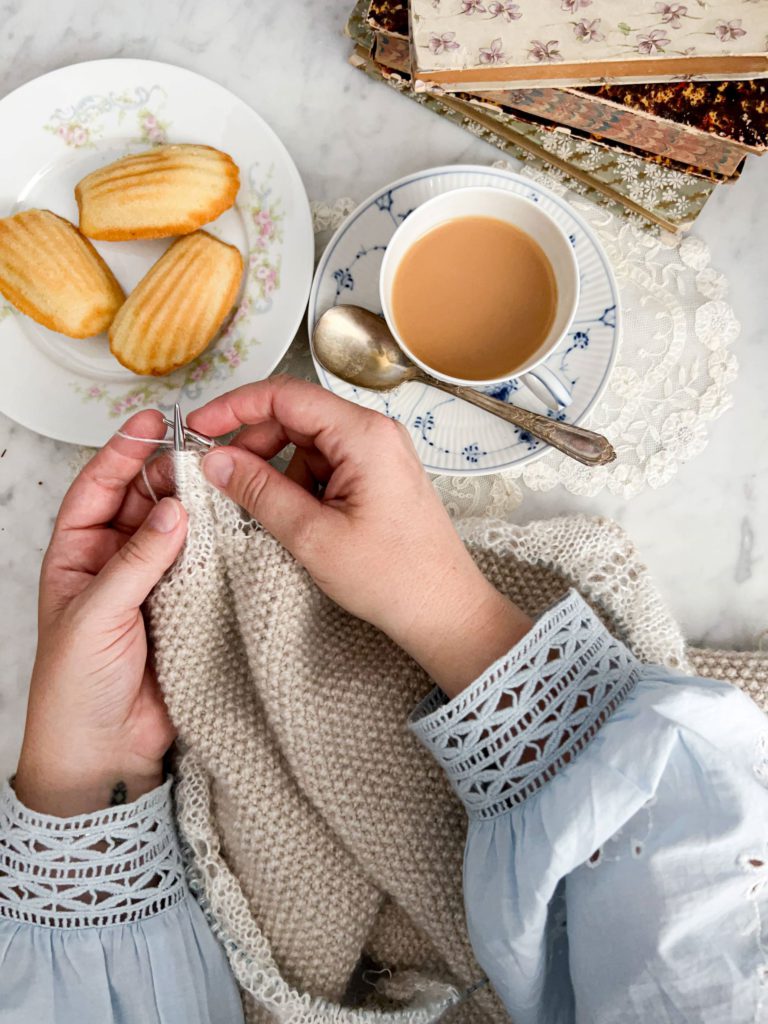There are nearly as many styles of knitting as there are knitters in the world. That’s because each knitter puts their own spin on their technique, so even if you’re theoretically using the same method, we often find small variations among knitters.
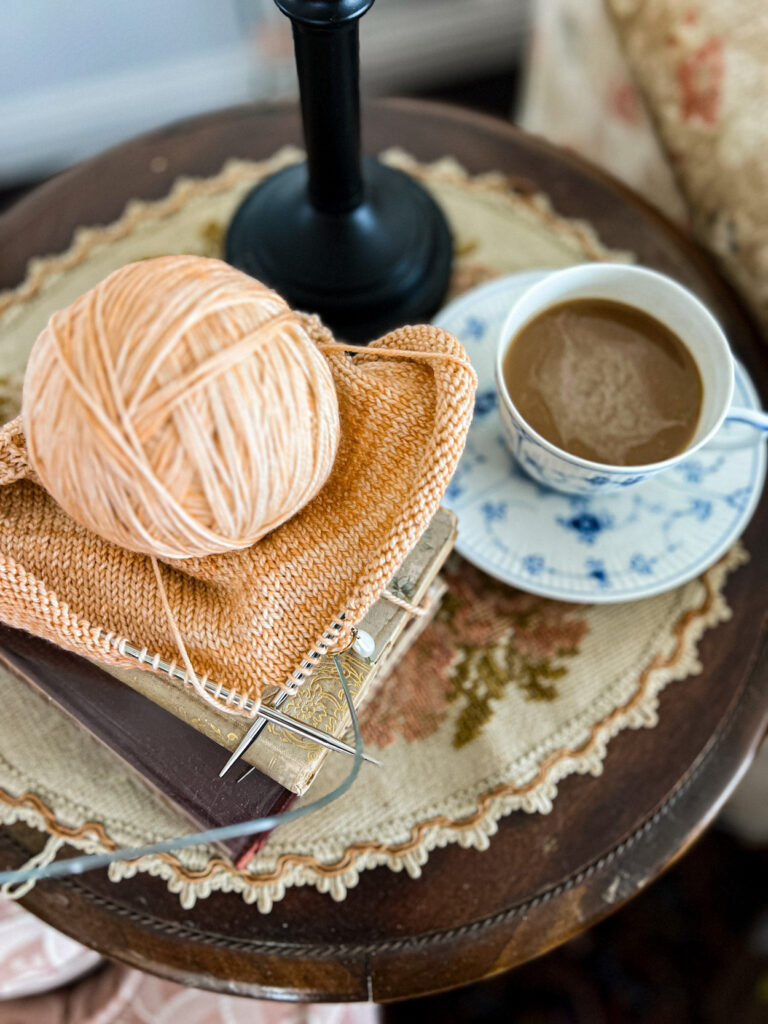
That being said, there are some common stylistic approaches that get lumped together. I’ve often seen conversation about whether one style or another is superior. The most common source of this comparisonitis seems to come between English style knitters and Continental style knitters.
In today’s blog post, we are going to look at these two very common knitting techniques. We’ll also explore the main differences between them, along with their benefits and disadvantages.
What Are Continental and English Knitting?
Although there are many different knitting methods, today’s blog post is just going to focus on the two main styles of knitting in the English-speaking world: Continental and English.
Full disclosure: I am a Continental knitter and always have been. That’s how I learned, and it worked well for me, so I felt no need to change it. Your knitting style is a matter of personal preference as much as it is anything else. The most important thing is that the style you choose is comfortable for you.
So let’s get into it!
Continental Knitting
Continental knitting is also sometimes known as “picking.” As you’ll see in this post, that’s really conflating two different techniques. In the continental knitting style, your yarn is tensioned in your left hand. That’s the primary distinguishing characteristic.
Many continental knitters are also pickers. That means that the tensioned yarn in the left hand is held still, and the working needle in the right hand is moved to grab the yarn and pull it through to form the next stitch (“picking” the stitch). However, some continental knitters are more like throwers. That means that, even though the yarn is tensioned in their left hand, they are using the left hand to wrap the yarn around the working needle, rather than using the working needle to grab the yarn. That can look like moving just the finger tensioning the yarn (sometimes called “flicking”). It can also look like taking the left hand entirely off the left needle to wrap the yarn around (the classic “throwing”). All of these variations are just fine.
Here’s a video showing you the difference between the techniques:
@abeeinthebonnet I didn’t even realize my knitting technique was unusual until I started doing lives here on TikTok and got a bunch of comments from people confused by what I was doing! But here we are. I’m a continental knitter, but I’m also a thrower. Go figure. #knitting #knittok #yarnlovers ♬ original sound – Lauren | Knitting patterns
This method is particularly popular in continental Europe, especially in Germany and Scandinavia. In fact, I learned how to knit this way because the friend who taught me learned from her grandmother who grew up in Eastern Europe.
This method of knitting can be especially helpful for quick knitting and for colorwork. However, I don’t think it’s true that the continental method is always the fastest style of knitting. The fastest knitting style is the knitting style you are most comfortable with and use the most. Remember, knitting is muscle memory. Whatever method your muscles are most comfortable with is probably going to be the method that will be the fastest knitting technique for you.
English Knitting
The English method, in contrast to Continental knitting, tensions the yarn in the right hand. While English-style knitting is also sometimes known as “throwing,” again, this is conflating a couple different elements of technique. More on that in a moment. The primary indicator that someone is probably an English knitter is going to be that their yarn is tensioned in their right hand.
The reason English style knitting is known as “throwing” is that in the classic version of English knitting, the right hand is completely removed from the right-hand needle to wrap the yarn around the needles to form the stitch. However, there are many English knitters who throw the stitch only by moving the index finger on the right hand instead of moving the entire right arm (this is also sometimes called “flicking”). This reduces the amount of movement involved in each stitch.
This knitting method is commonly used in the UK, as its name would suggest. It’s also popular in the United States and some other English-speaking countries.
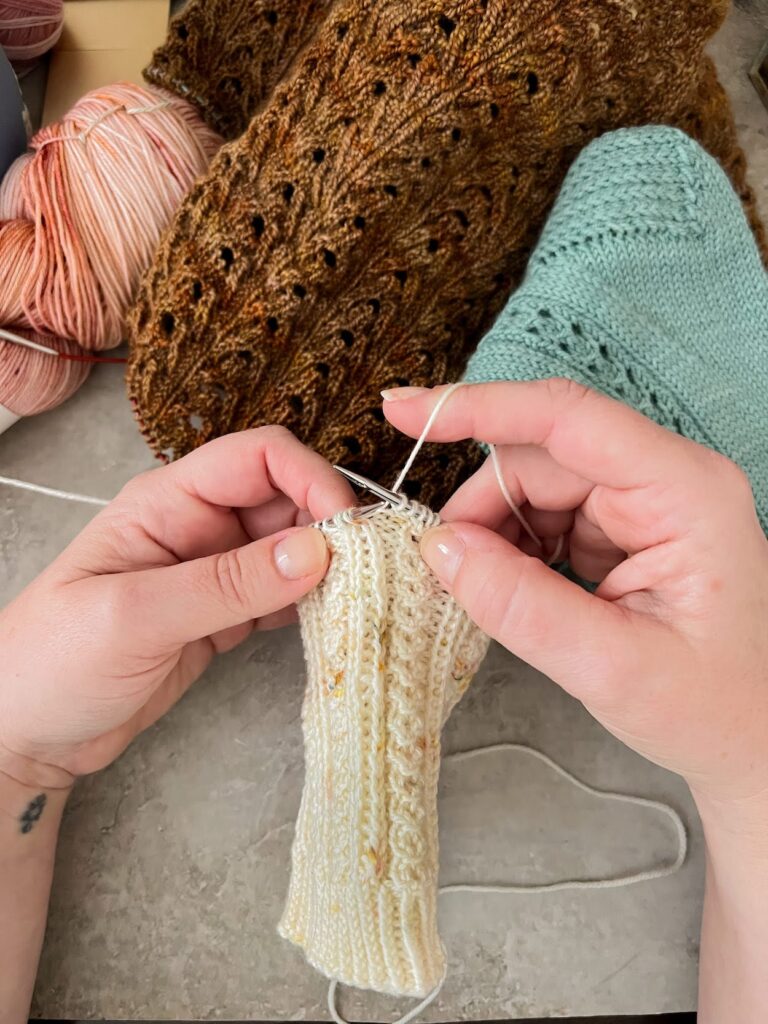
Advantages and Disadvantages of Continental Knitting
Each of these knitting styles has some advantages and disadvantages. Continental is usually faster than English knitting. Now again, as I said above, I don’t think that’s an absolute truth for every knitter. I’m also not sure speed is necessarily the right goal for many knitters.
However, if speed is what you seek, continental knitting may help you achieve that goal. That’s because it usually requires less movement of the upper body than English style knitting does.
Continental knitting also tends to be less likely to cause repetitive strain injuries because of this reduced amount of movement. Again, if you have adopted the English knitting style where you flick your stitches with just your right index finger, then you’re probably at no greater risk for RSI than a continental knitter who flicks with their left index finger.
In fact, just to be sure, I tried it out while writing this blog post. It was an unfamiliar method for me, so of course my yarn tension was a mess and things felt quite fiddly. The actual amount of motion in my arms, though, was pretty similar to my usual Continental method.
In the most common formulations of English style knitting and continental style knitting, though, it is true that there is more movement in English style knitting. You are more likely to see shoulder and elbow injuries in the right arm as a result. If you are recovering from an injury, managing arthritis or repetitive stress problems, or otherwise focused on avoiding causing pain to yourself, you’ll probably want to use the knitting method with the least amount of hand movement.
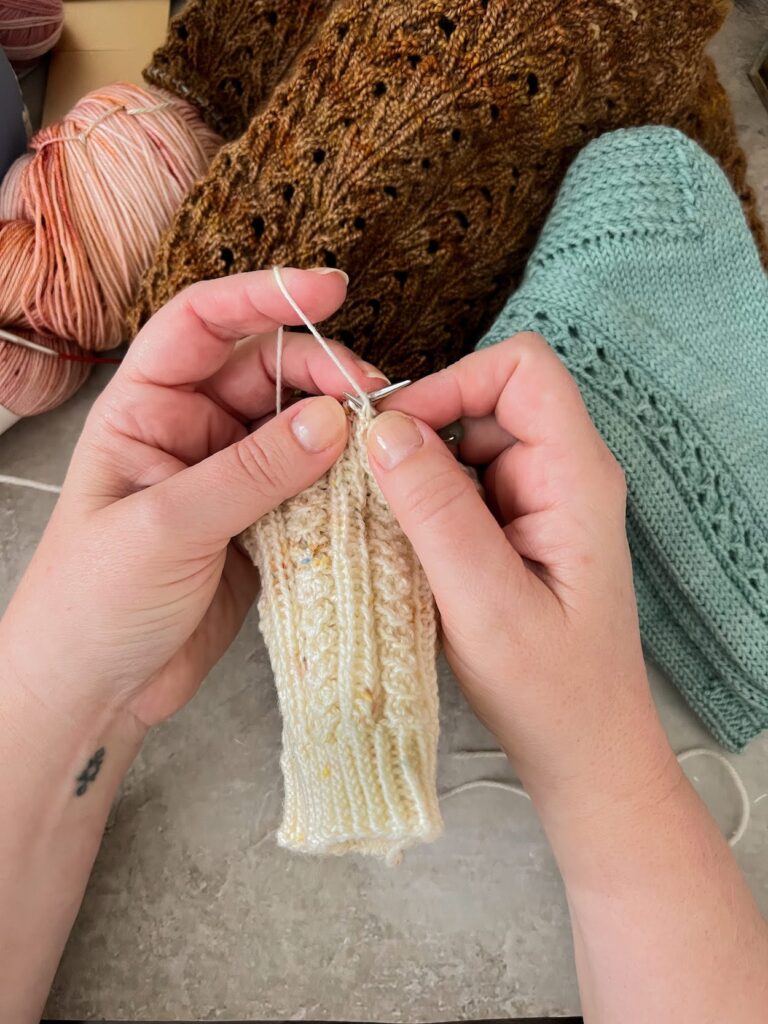
Advantages and Disadvantages of English Knitting
In some ways, English style knitting is easier for new knitters. By allowing the knitter to let go of the right needle and focus just on wrapping the yarn to form a new stitch, this knitting technique simplifies things a bit.
This method seems to be (anecdotally) the most common method in English-speaking countries. As a result, if you are also an English speaker, you’ll probably be more likely to find resources showing knitters how to make stitches and do other techniques using this style of knitting.
One of the few actual drawbacks of English style knitting, aside from the repetitive movement issues that can be mitigated, is that English style knitting does take a little longer to transition between knits and purls. That makes it a little slower for working ribbing, which can make things like hems on garments feel more tedious because they are pretty significant amounts of ribbing.
Why You Might Want to Knit Both Ways
Most knitters end up finding that one style or the other fits best for them. They stick with that style, and there’s very little need to change things up once they get comfortable. There is, though, one scenario when it is very helpful to know both knitting techniques and to be able to do them at the same time.
It’s colorwork.
Many colorwork knitters successfully make all sorts of projects holding all the different colors of yarn in one hand. Some knitters, though, find it’s nice to be able to work one color with the left hand and one color with the right hand. This helps avoid tangles and more easily establishes yarn dominance.
I’ll be honest: this is not a method I have tried, but I have been very curious about it. If this is your preferred technique for doing colorwork, I’d love to hear more about it!
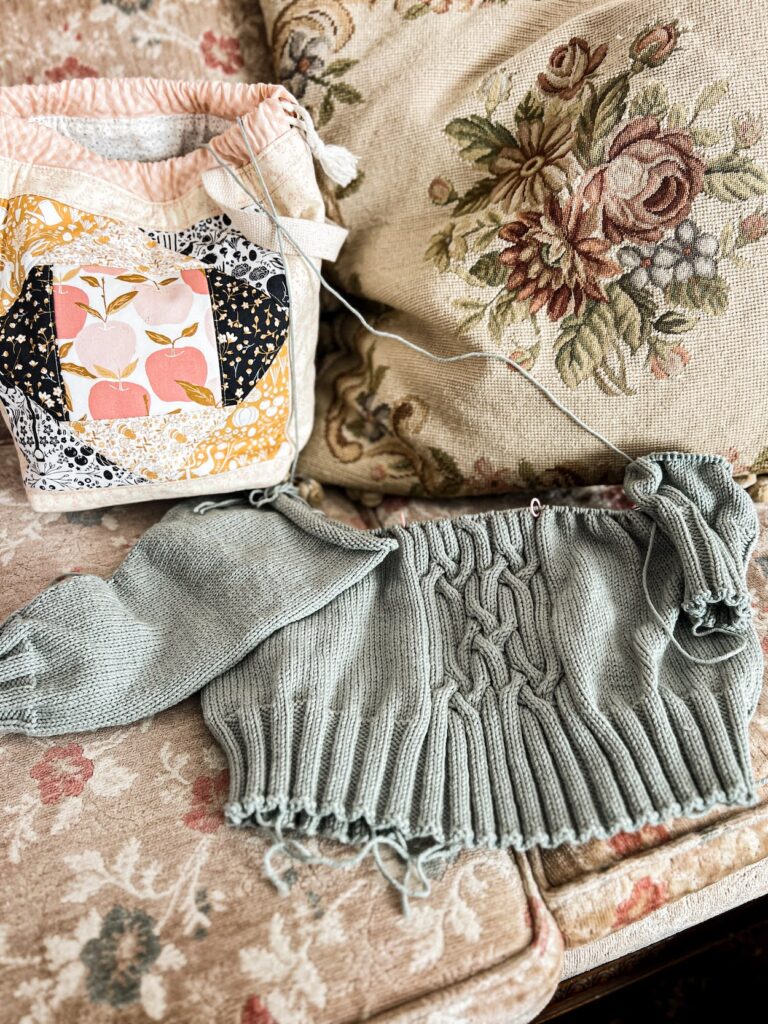
Left-Handed Knitters
Now, here’s where it gets really fun. Most knitting techniques assume that a person is dominant in their right hand. Many left-handed people learn to knit the same way that right-handed people knit, and it works out fine.
However, there are some left-handed knitters who mirror their technique instead. This could mean that a left-handed knitter has learned to knit English style, but with their left hand. In other words, they will tension their yarn in the left hand, but they will completely remove the left hand from the left needle, wrap the yarn around to create the stitch, and then pick up the left needle again. This type of left-handed knitting is essentially the same technique used in the most common version of English knitting, but it is the mirror image of it.
Many left-handed knitters learn to knit continental style because the yarn is tensioned in their left hand. However, if the person started out as a left-handed crocheter who is used to holding a hook in their left hand and tensioning the yarn in their right hand, they might find that English-style knitting is actually more comfortable.
Essentially, what this all boils down to is this: every knitter is different, and bright-line rules rarely serve any of us well.
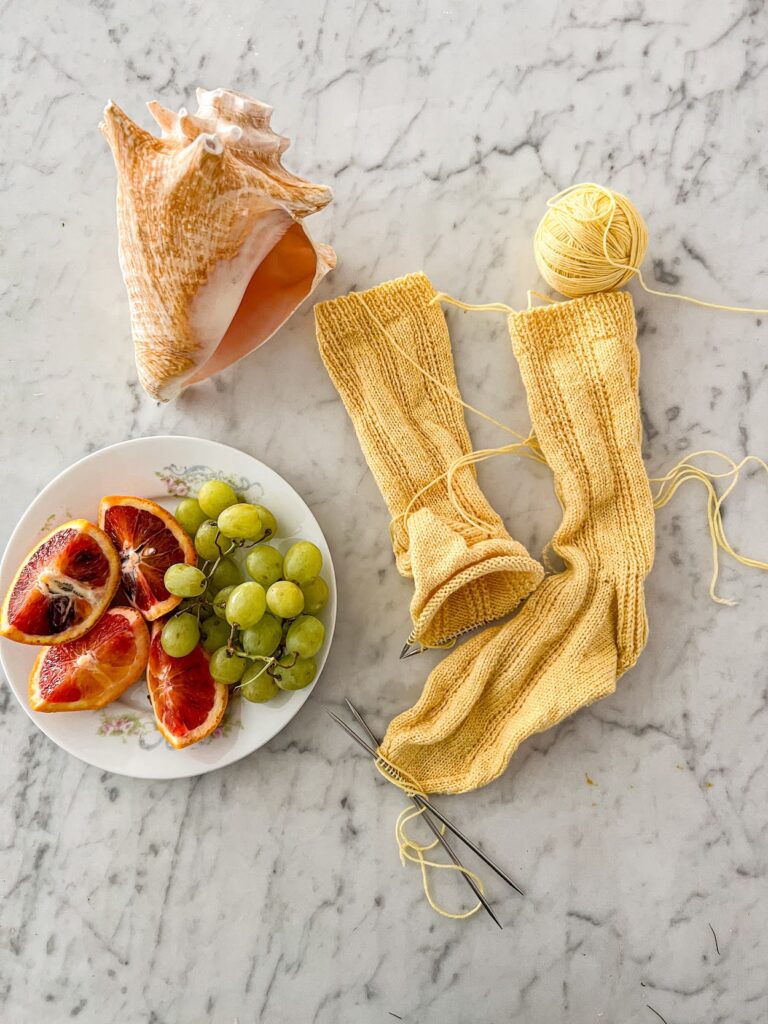
Social Pressure and Knitting Styles
I was really inspired to write this blog post by some comments I had seen on social media. It seems that some knitters really feel pressure to keep up with others, to use the method that others tout as the perfect method, or to otherwise adapt their knitting styles to match what they see in Instagram posts and TikTok videos. I encourage you to ignore that pressure.
Remember, knitting is not a race, and there’s no need to match the fastest knitters in your circle. We all knit at our own pace. Different methods of knitting will still help us achieve the results we seek. You have the rest of your knitting life to amass a wonderful collection of hand knits. See, there’s no such thing as the wrong method if it gets you the results you seek without causing you pain.
Most interestingly, though, your knitting technique tells a story about how you learned to knit, who taught you, and what methods work well for you as a unique, individual knitter. That’s pretty cool, if you ask me.
Let’s stay connected!
Join my newsletter for 30% off all new releases, regular updates with helpful tips and tricks, first crack at registration for upcoming workshops, exclusive discounts, and more.
Join the A Bee In The Bonnet Facebook Group to participate in knitalongs and other fun community events
Come hang out with me on the A Bee In The Bonnet TikTok
Follow along on the A Bee In The Bonnet Instagram
Get inspired via the A Bee In The Bonnet Pinterest

